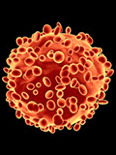
JOURNAL OF NEUROPATHOLOGY AND EXPERIMENTAL NEUROLOGY
Scope & Guideline
Innovating Pathways in Neuropathology Research
Introduction
Aims and Scopes
- Molecular Pathology of Neurological Disorders:
The journal extensively covers the molecular and genetic underpinnings of various neuropathologies, including gliomas, neurodegenerative diseases, and other CNS tumors, providing insights into the mechanisms of disease progression and potential therapeutic targets. - Clinical Neuropathology:
A significant focus is placed on the clinical implications of neuropathological findings, including the correlation of histopathological features with clinical outcomes, diagnostic challenges, and treatment responses in various neurological conditions. - Advanced Diagnostic Techniques:
The journal promotes the use of sophisticated diagnostic methodologies, such as next-generation sequencing, advanced imaging techniques, and biomarker studies, to enhance the accuracy of diagnoses and to facilitate personalized medicine in neuropathology. - Neuroinflammation and Neurodegeneration:
Research on neuroinflammatory processes and their role in neurodegenerative diseases, including Alzheimer's disease and amyotrophic lateral sclerosis (ALS), is a key area, highlighting the interplay between immune responses and neuronal health. - Tumor Biology and Therapeutics:
The journal investigates the biology of CNS tumors, their classification, and the development of novel therapeutic strategies, including the exploration of genetic fusions, epigenetic modifications, and targeted therapies.
Trending and Emerging
- Precision Medicine in Neuropathology:
An emerging focus on precision medicine is evident, with increasing studies aimed at tailoring treatments based on the molecular and genetic profile of individual tumors and neurological disorders. - Neuroinflammation Research:
Research exploring the role of neuroinflammation in neurodegenerative diseases and CNS injuries is gaining traction, emphasizing the importance of immune responses in disease progression and potential therapeutic interventions. - Integration of Artificial Intelligence and Machine Learning:
There is a notable rise in the application of artificial intelligence and machine learning techniques in neuropathology for image analysis, diagnostic accuracy, and predictive modeling, revolutionizing how neuropathological data is interpreted. - Longitudinal Studies of Brain Health:
Emerging studies focusing on the longitudinal assessment of brain health and neuropathological changes over time are increasingly popular, particularly in aging populations and in the context of neurodegenerative diseases. - Advanced Biomarker Discovery:
Research on the identification and validation of novel biomarkers for early diagnosis and prognosis of CNS disorders is on the rise, with a focus on molecular, genetic, and proteomic markers.
Declining or Waning
- Traditional Histopathological Techniques:
There appears to be a waning interest in purely traditional histopathological methods, as research increasingly emphasizes molecular and genetic analyses over conventional approaches to diagnosis and classification of CNS disorders. - Generalized Studies on Neurodegeneration:
Broader, less specific studies on neurodegeneration are becoming less common as the field shifts towards targeted investigations focusing on specific mechanisms, pathways, and biomarkers associated with particular diseases. - Non-Molecular Approaches to CNS Tumors:
Research focusing primarily on non-molecular aspects of CNS tumors, such as purely morphological studies without genetic or molecular context, is declining as the field moves towards integrative approaches that combine histological and molecular data.
Similar Journals

NEUROGENETICS
Pioneering Research at the Intersection of Mind and GeneticsNEUROGENETICS is a distinguished journal published by SPRINGER, focusing on the intersection of genetics and neuroscience. With its ISSN 1364-6745 and E-ISSN 1364-6753, this journal has been a vital resource in the fields of cellular and molecular neuroscience and genetics since its establishment in 1997. As of 2023, it is ranked Q3 in Cellular and Molecular Neuroscience and Q2 in both Genetics and Clinical Genetics, reflecting its growing influence and importance in these areas. Although not an open-access journal, it provides significant insights and research findings that contribute to advancing our understanding of genetic influences on neural function and disease. Based in Germany with an address at ONE NEW YORK PLAZA, SUITE 4600 , NEW YORK, NY 10004, UNITED STATES, NEUROGENETICS serves as a crucial platform for researchers, professionals, and students alike to explore innovative studies that are essential for the future of neuroscience and genetics. With its continuous commitment to high-quality research, the journal aims to foster collaboration and knowledge dissemination among the scientific community.

JOURNAL OF CUTANEOUS PATHOLOGY
Pioneering Discoveries in Cutaneous PathologyJOURNAL OF CUTANEOUS PATHOLOGY, published by WILEY, serves as a vital resource in the fields of dermatology, pathology, and histology, reflecting its distinguished position with impressive categorization quartiles: Q2 in Dermatology and Pathology and Forensic Medicine, and Q3 in Histology for 2023. Established in 1974, this esteemed journal features peer-reviewed research that drives advancements in understanding skin diseases, with a convergence period extending to 2024. The journal's impactful contributions are evident through its Scopus rankings, placing it among the top tiers of its category, specifically holding the 52nd rank in Dermatology. Researchers, professionals, and students will find the journal invaluable for its rich content and critical insights into cutaneous pathology, despite its current non-open access status. The journal's dedication to fostering knowledge in this specialized field underlines its significance as a go-to reference for ongoing scholarship and clinical practice.

PATHOLOGY INTERNATIONAL
Empowering Clinicians and Researchers with Cutting-Edge KnowledgePATHOLOGY INTERNATIONAL, published by WILEY, stands as a distinguished journal in the field of pathology and forensic medicine, serving as an essential resource for researchers, clinicians, and students alike. With its ISSN 1320-5463 and E-ISSN 1440-1827, PATHOLOGY INTERNATIONAL has established itself since its inception in 1951, navigating through an evolving landscape in medical science with insights and breakthroughs up to 2024. It holds a commendable Q2 ranking in both the Medicine (miscellaneous) and Pathology and Forensic Medicine categories, indicating its robust influence and quality within these fields, as evidenced by its placement in the 70th percentile of Scopus rankings. While currently not an open-access journal, it provides access options that ensure valuable research remains available to the academic community. PATHOLOGY INTERNATIONAL commits to advancing the discipline through pioneering research articles, comprehensive reviews, and expert opinions that push the boundaries of understanding in pathology, thereby supporting the enhancement of diagnostic and therapeutic practices.

CLINICAL NEUROPATHOLOGY
Exploring the intersection of neurology and pathology.CLINICAL NEUROPATHOLOGY is a vital scholarly journal published by DUSTRI-VERLAG DR KARL FEISTLE, specializing in the domains of neurology, pathology, and their clinical applications. Established in 1982 and spanning through to its projected completion in 2024, this journal disseminates high-quality research that significantly contributes to the understanding of neurological disorders and their pathological underpinnings. While the journal currently operates under a traditional access model, its commitment to rigorous peer review ensures the publication of impactful findings, strengthening its foothold in the field, as evidenced by its Q3 quartile rankings in several categories, including Medicine (miscellaneous), Neurology, and Pathology and Forensic Medicine. Those engaged in clinical research and practice will find CLINICAL NEUROPATHOLOGY to be an essential resource for the latest advancements, trends, and discussions that shape the future of neurological pathology.

Molecular Diagnosis & Therapy
Pioneering the Future of Molecular MedicineMolecular Diagnosis & Therapy, published by ADIS INT LTD, is a premier journal dedicated to the cutting-edge fields of genetics, molecular medicine, and pharmacology. With a strong emphasis on the translation of molecular insights into innovative therapeutic strategies, this journal serves as a vital resource for researchers, clinicians, and students aiming to stay at the forefront of medical and scientific advancements. The journal boasts an impressive standing in its categories, holding a Q1 ranking in Genetics, Medicine (miscellaneous), and Pharmacology, alongside a Q2 classification in Molecular Medicine for 2023, reflecting its influential contributions to the scientific community. Indexed in Scopus, it occupies distinct positions in its respective fields, ranked #77 in Genetics and Pharmacology, and #53 in Molecular Medicine, highlighting its robust impact factor and scholarly influence. Although it is not open access, the journal ensures widespread dissemination of valuable research, promoting enhanced understanding of molecular diagnostic techniques and therapeutic interventions. Since its inception in 2001, and continuing through to 2024, Molecular Diagnosis & Therapy remains an essential platform for disseminating vital research findings, fostering academic collaboration, and driving forward the dialogue in molecular diagnostics and treatment methodologies.

Annual Review of Pathology-Mechanisms of Disease
Bridging Theory and Practice in Disease MechanismsAnnual Review of Pathology: Mechanisms of Disease is a premier scholarly journal published by ANNUAL REVIEWS that systematically reviews significant advancements in the field of pathology and the mechanisms underpinning various diseases. With an ISSN of 1553-4006 and an E-ISSN of 1553-4014, the journal has established its importance within the academic community, evidenced by its prestigious Q1 rankings in several categories including medicine, pathology, forensic medicine, and plant science for 2023. Notably, it ranks #1 out of 208 in the pathology and forensic medicine category, placing it in the 99th percentile according to Scopus metrics. Although not an open-access journal, it offers crucial insights to researchers, professionals, and students alike by providing a comprehensive understanding of pathophysiological concepts and emerging trends. The journal continues to be an essential resource for those dedicated to advancing research and practical applications in disease mechanisms.

REVUE NEUROLOGIQUE
Connecting Scholars and Practitioners in NeurologyREVUE NEUROLOGIQUE, published by MASSON EDITEUR, is a prestigious academic journal that plays an essential role in the field of neurology. With a rich history spanning from 1946 to the present, this journal focuses on both foundational and clinical aspects of neurology, underscoring its significance within the medical community. Holding an impressive Q2 ranking in both general and clinical neurology categories as of 2023, REVUE NEUROLOGIQUE is recognized for its contribution to advancing neurological science, as evidenced by its Scopus rankings, with a notable position in the 62nd percentile for clinical neurology. The journal fosters an environment for rigorous research and is instrumental for professionals and scholars aiming to stay abreast of the latest developments in neurological disorders and treatments. Although it is not an open-access publication, it offers a wealth of vital research through its issues, appealing to those engaged in both clinical practice and academic research in neurology.

BRAIN PATHOLOGY
Exploring the Complexities of Neurological DisordersBRAIN PATHOLOGY, published by WILEY, is a leading journal in the fields of neurology, neuroscience, and pathology, recognized for its rigorous peer-review process and high-impact research contributions. With an impressive impact factor and consistently ranked in the Q1 quartile across multiple categories, BRAIN PATHOLOGY maintains a prominent status, with a Scopus ranking placing it among the top 10% of journals in its fields. Since its inception in 1990, the journal has served as a crucial platform for researchers and clinicians alike, disseminating groundbreaking findings that advance our understanding of brain diseases and injuries. Through its dedication to publishing high-quality, innovative research, BRAIN PATHOLOGY plays a vital role in shaping the future of brain pathology research. While it does not currently offer open access, articles can be accessed through institutional subscriptions. Researchers, professionals, and students are encouraged to contribute to and engage with this esteemed publication to foster knowledge and collaboration within this dynamic field.

Journal of Central Nervous System Disease
Pioneering research for a healthier brain.Welcome to the Journal of Central Nervous System Disease, a premier Open Access publication dedicated to advancing the understanding of neurological disorders and their underlying mechanisms. Published by SAGE Publications Ltd, this esteemed journal has been serving the scientific community since 2009 and is committed to disseminating high-quality research that spans from clinical neurology to cellular and molecular neuroscience. With an impressive impact factor, the journal ranks within the top quartiles—Q2 in both Neurology and Clinical Neurology, and Q3 in Cellular and Molecular Neuroscience as of 2023. The journal's indexing in Scopus reflects its significant contribution to the field, being ranked #83 out of 400 in clinical neurology and #38 out of 97 in cellular and molecular neuroscience. This essential resource, based in the United States, is crucial for researchers, clinicians, and students looking to stay at the forefront of neurological science. By providing Open Access options, we ensure that groundbreaking research is readily available to a global audience, fostering collaboration and innovation in the study of central nervous system diseases.

Acta Neuropathologica Communications
Championing Open Access in Neuropathological Research.Acta Neuropathologica Communications is a distinguished open-access journal published by BMC since 2013, focusing on the rapidly advancing fields of neurology, cellular and molecular neuroscience, and pathology. Located in the United Kingdom, this journal serves as a vital platform for researchers to disseminate significant findings that enhance our understanding of neurological disorders and their underlying mechanisms. With an impressive impact factor reflected in its Q1 ranking across multiple relevant categories, including Cellular and Molecular Neuroscience, Neurology (Clinical), and Pathology and Forensic Medicine, Acta Neuropathologica Communications stands out in the academic community for its rigorous peer-review process and commitment to high-quality research. The journal’s Scopus rankings highlight its global relevance, placing it in the top percentiles among leading research publications. Researchers, professionals, and students alike are encouraged to access and contribute to this essential resource, fostering a collaborative and informed approach to tackling the complexities of neuropathology and neuroscience.